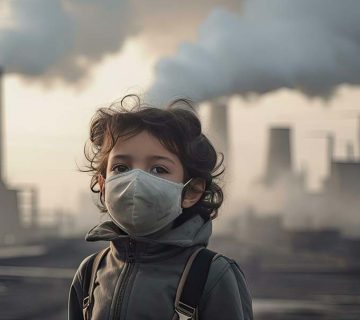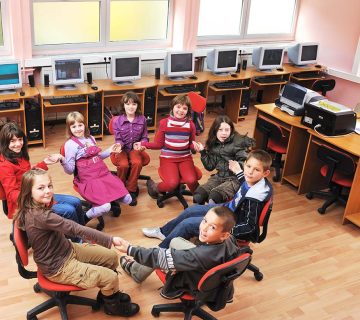Introduction
Elementary school children (ages 5 to 12) are among the most vulnerable groups affected by air pollution. Their developing lungs, immature immune systems, and high physical activity levels make them more susceptible to the harmful effects of polluted air.
In large cities across Iran, air pollution has become a serious concern for both parents and teachers. This environmental problem affects not only children’s physical health but also their mental performance and academic success.
Why Children Are More Vulnerable to Air Pollution
- Smaller lungs: Children’s lungs are still developing, allowing pollutants to penetrate more easily.
- Faster breathing: Kids inhale more air per minute than adults, increasing pollutant intake.
- Weaker immune system: Their bodies are less capable of fighting harmful particles.
- Higher activity levels: Outdoor play and exercise lead to greater exposure to polluted air.
Physical Effects of Air Pollution on Children
1. Respiratory Problems
- Wheezing, dry cough, and shortness of breath.
- Worsening of chronic conditions such as asthma.
2. Frequent Infections
- Higher risk of respiratory infections like colds and bronchitis.
- Longer recovery periods due to weakened immunity.
3. Reduced Lung Growth
Studies show that children growing up in polluted environments have slower lung development, which can lead to long-term respiratory issues in adulthood.
4. Cardiovascular Risks
Long-term exposure to air pollution increases the likelihood of developing heart and vascular diseases later in life.
Cognitive and Mental Effects
1. Decreased Concentration and Learning
Fine particles and toxic gases can affect brain function, leading to poor focus and short-term memory loss.
2. Behavioral Issues
Research suggests a link between air pollution and increased anxiety, hyperactivity, or aggression in children.
3. Academic Decline
Children regularly exposed to polluted air often show lower performance in subjects like math and language.
4. Brain Development Impacts
Chronic exposure may disrupt neural connections essential for learning and emotional regulation.
When Is Air Pollution Most Dangerous?
- When the Air Quality Index (AQI) exceeds 150.
- During autumn and winter, due to temperature inversion.
- In rush-hour traffic, especially mornings and evenings.
How Parents Can Protect Their Children
At Home
- Use air purifiers or natural ventilation.
- Keep windows closed during high pollution hours.
- Serve foods rich in antioxidants (fruits and vegetables like oranges, kiwis, carrots).
At School
- Limit outdoor activities on polluted days.
- Encourage mask use (sized appropriately for children).
- Ensure timely communication between schools and parents about air quality alerts.
Lifestyle Tips
- Teach children to wash hands and face after going outside.
- Encourage them to drink plenty of water to flush out toxins.
- Promote indoor play and reading instead of outdoor exposure on bad-air days.
The Role of Authorities
- Expand green urban spaces.
- Promote clean transportation systems.
- Provide accurate AQI updates and warnings.
- Support schools with ventilation systems and remote learning during high pollution periods.
Conclusion
Air pollution poses a serious threat to the physical and mental well-being of elementary school children. Its effects can be both immediate (like respiratory issues) and long-term (such as slowed lung growth or cognitive decline). Protecting children requires joint efforts from parents, educators, and policymakers to create safer environments and healthier habits.
Frequently Asked Questions (FAQ)
1. Why are children more affected by air pollution than adults?
Because of their smaller lungs, faster breathing, and weaker immune systems.
2. How does air pollution affect learning?
It reduces focus, memory, and overall academic performance.
3. What foods help reduce the effects of pollution?
Vitamin C–rich fruits (like oranges and kiwis) and fresh vegetables.
4. Are masks effective for children?
Yes, but they must fit properly to cover the child’s nose and mouth.







